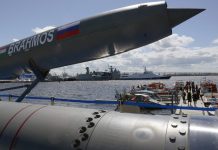After the ambitious but not very successful lunar exploration mission – ‘Chandrayaan-2’, the Indian Space and Research Organisation (ISRO) is all set to launch its sequel – the Chandrayaan-3 in 2021.
The Chandrayaan-3 was planned after the Chandrayaan-2’s lander deviated from its flight path last year causing a ‘hard landing’, after which contact was lost with the rover. With the Chandrayaan-3, ISRO may re-attempt the landing of a rover- completing its third lunar exploration mission.
The mission would include only the lander and a rover, not an orbiter, unlike the former one. A successful soft landing of the lander will make India the fourth country in the world after the Soviet Union, the United States, and the People’s Republic of China to achieve the feat.

The Chandrayaan-3 mission has been delayed due to the COVID-19 pandemic and its resultant lockdowns and travel restrictions. The union minister Jitendra Singh on Sunday made the announcement, revealing the exclusion of the orbiter.
The Chandrayaan-3 is an attempt to complete the mission objectives of Chandrayaan-2, informed the minister. “As for Chandrayaan-3, the launch may now take place somewhere in early 2021. Chandrayaan-3 will be a mission repeat of Chandrayaan-2 and will include a Lander and Rover similar to that of Chandrayaan-2, but will not have an orbiter,” he said.
However, despite the failure of the operationalization of the rover, the orbiter of Chandrayaan-2 is working and transmitting data. Recently on 30th July 2020, its Terrain-Mapping Camera (TMC) captured the images of the Sarabhai Crater on Mare Serenitatis in the northeast quadrant of the Moon.
According to the recent data from ISRO’s maiden moon mission, the Chandrayaan-1, the presence of rust on the moon’s poles could indicate the effects of Earth’s atmosphere on it, remarked NASA scientists. They further added, “Thus, the Chandrayaan-1 Moon data indicates that the Moon’s poles are home to water, this is what the scientists are trying to decipher.”
“The sign of this finding is that even though the surface of the Moon is known to have iron-rich rocks, it is not known for the presence of water and oxygen, which are the two elements needed to interact with iron to create rust,” Jitendra Singh said.
Notably, the nation saw an emotional moment when Prime Minister Narendra Modi consoled the ISRO chief K Sivan when the news of the failed landing attempt of Vikram lander was received in the mission control room of ISRO, during the Chandrayaan-2 mission.
Meanwhile, ISRO is also gearing up for its first manned space mission named ‘Gagaynyaan’, which is expected to launch in two years. “Constraints due to the COVID pandemic led to some disruptions in the plan for Gaganyaan but efforts are going on to stick to the timeline of around 2022,” the minister added.




